On painting portraits > One of the most common characteristics of my work is the abstract background. I use it to give power to the subject and weight to the painting. Here’s how I do it—and why.
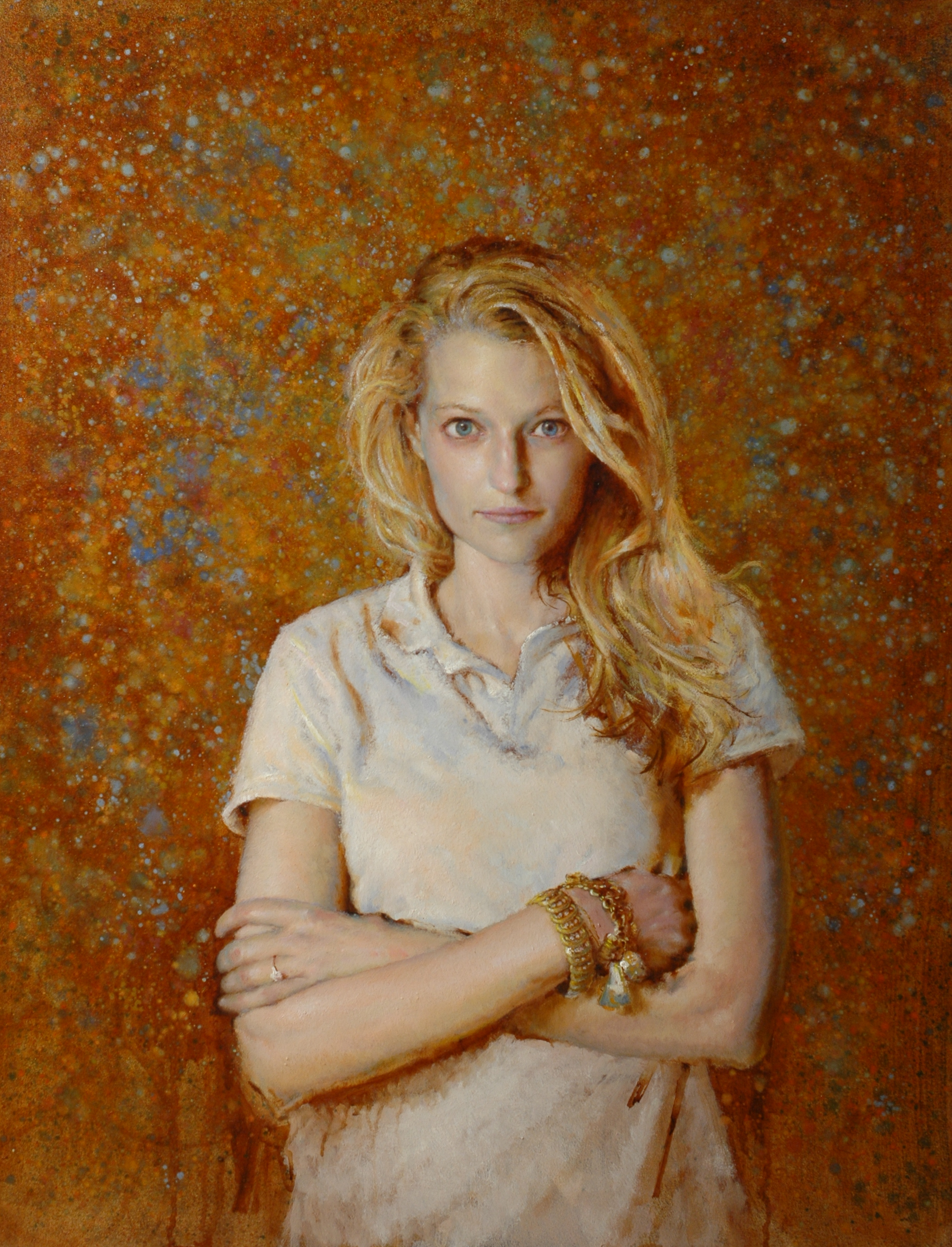
By Seth Havercamp
www.sethhaverkamp.com
Painting portraits is my passion. Nothing holds my attention more than painting a face—young or old, man or woman. I can spend half a lifetime painting a face, striving countless hours to capture the unique quality of that face. However, as my painting years progressed, I noticed that I struggled to finish paintings. Although I liked the concept of the backgrounds I chose to paint, they were impossible for me to finish. I couldn’t focus on them. Somehow, they got in the way of the portrait and did not support the subject. I would do anything to keep from painting when it was time to “fill in the rest.”
I have been painting and drawing most of my life, and I feel I am just now starting to figure out both how and what I want to paint. I have always been inspired by what other artists have created, but too often I have been too influenced, to the point of wanting to simply emulate them. This led to subjects and objects I just plumb wasn’t interested in painting. Of course I didn’t realize this at the time, so I kept making the same mistake time and again. I came to the conclusion that painting was supposed to be misery, and that every artist out there hated their passion. Another problem with being overly influenced by others was that my paintings lacked a common thread linking them together.
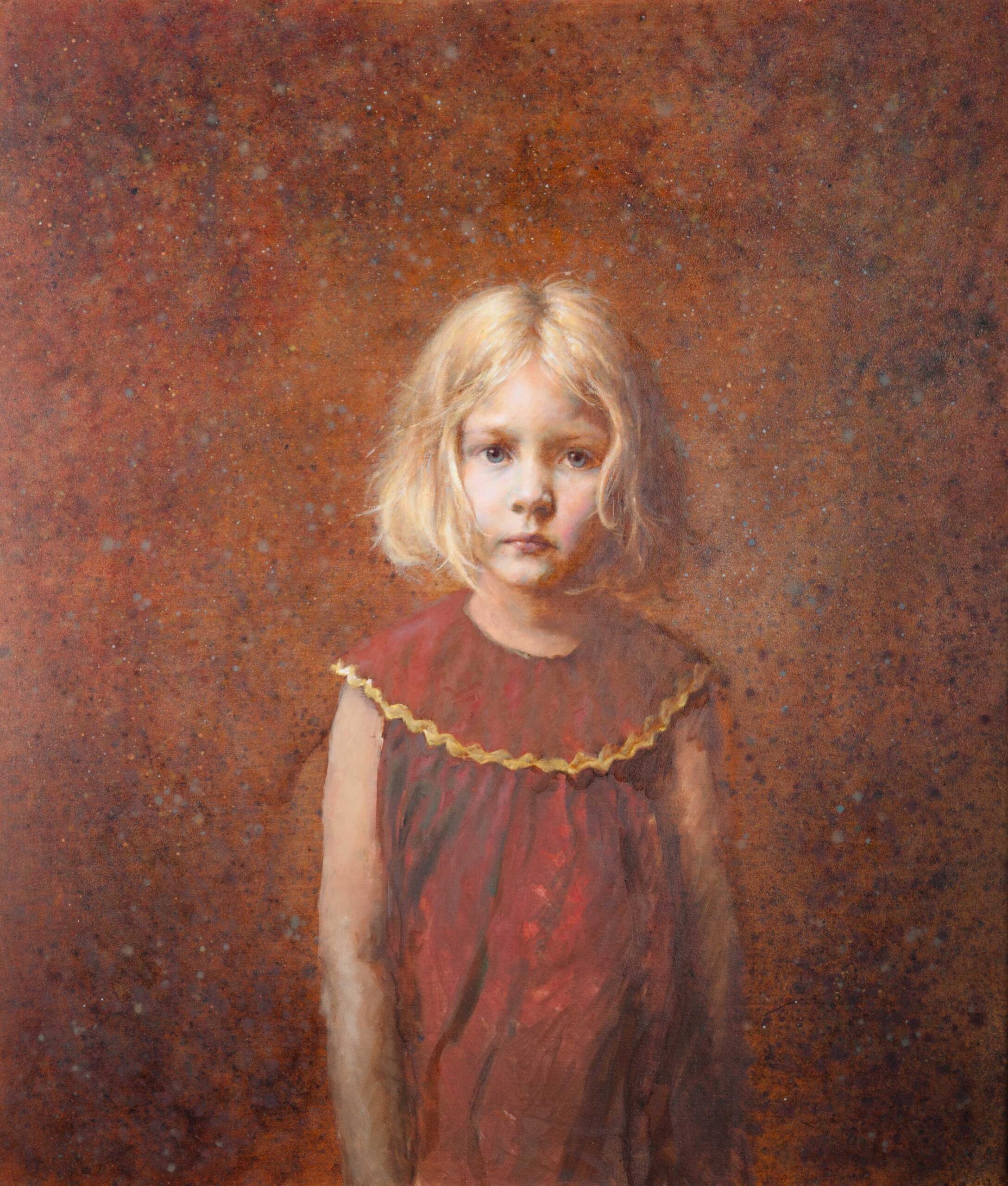
Years ago I noticed on a trip to the National Gallery of Art that the vast majority of portraits had simplified backgrounds. I don’t know why this had never dawned on me before—it’s as clear as day now. I realized that I had been complicating my painting unnecessarily. Some of the greats—Rembrandt, Sargent, Klimt, and Ingres—all used simplified backgrounds. A few modern masters like Wyeth, Shanks, and Schmid also approach backgrounds with the attitude of less-is-more. What a fantastic realization: many masters, past and present, often simplified their backgrounds.
I decided to experiment. Although certainly not a new way to paint, it was new to me. I came up with this style of splashing paint for the backgrounds of my portraits. By building up layers, I can play around with colors and textures in ways I feel are most supportive to the subject.
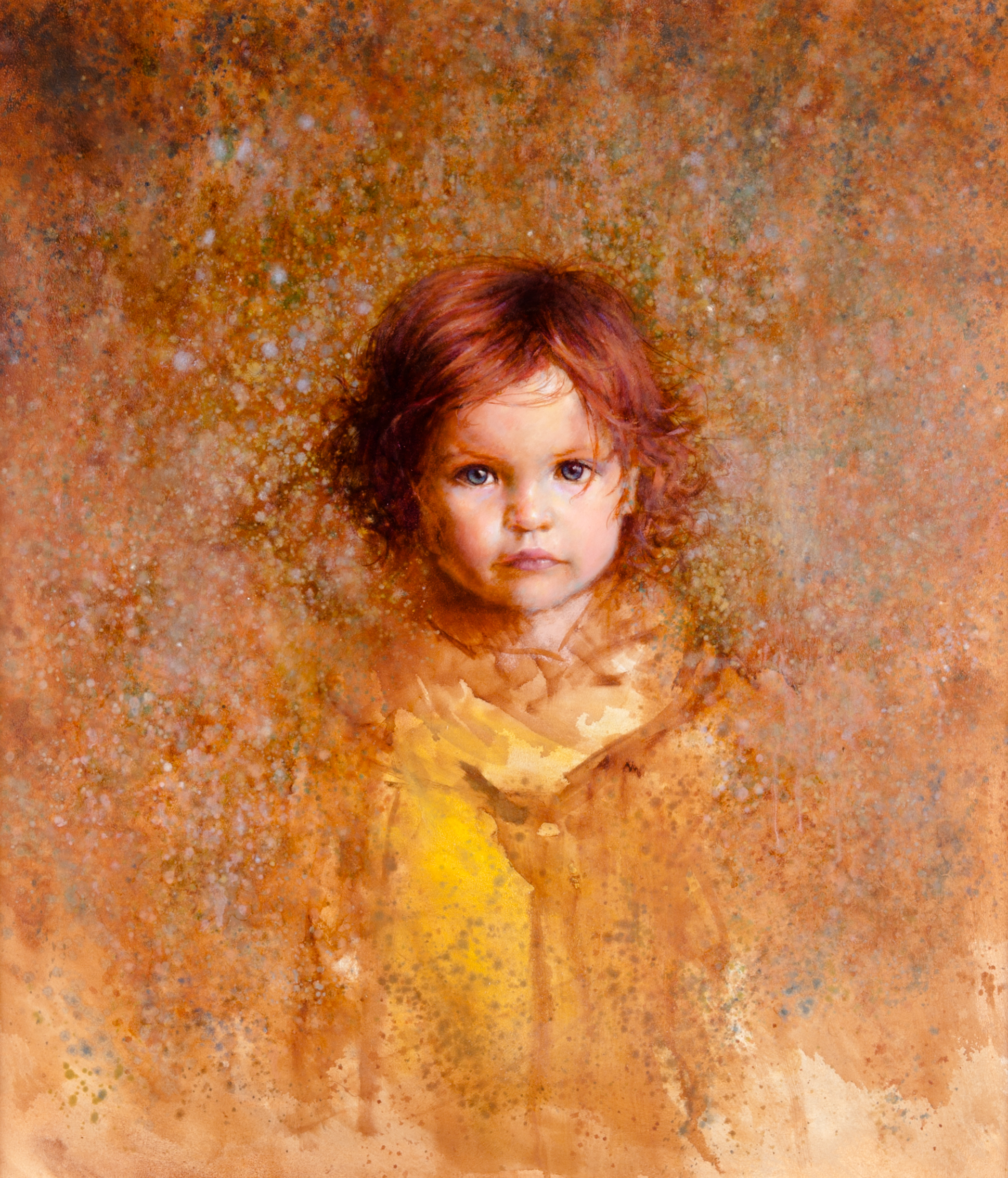
The way I create my backgrounds
I always work the portrait and the background simultaneously. This helps ensure that the background and the subject relate and fit together as one. I first put a thin coat of paint on the background, usually transparent brown oxide. This is my grisaille color and starting point for my paintings. After the grisaille dries, I brush on a thinned-down color (the general background color) with a lot of turpenoid mixed in. After laying the painting flat, I cover the subject with paper towels and start to fling thinned paint with a big cheap bristle brush onto the panel. I generally use strong colors, and attempt to get a color theme going. By varying the thinness of paint, I can achieve a wide array of different-sized paint splatters. I do multiple layers and glaze different colors until I feel the background both supports the subject and also has a weight of its own. I want the backgrounds of my paintings to be able to stand on their own, yet not distract from the subject.
There are many different ways to approach these backgrounds that lead to highly varying results. For example, if you paint a wide area with relatively dry paint and then splatter turpenoid on top, it spreads the paint out and leaves the color underneath. You can also do this with some stand oil mixed in and you get yet another result.
Part of the fun of this process is that you never know exactly how it’s going to dry.
What is a painting anyway? To me, it is a visual experience: this one moment in time captured forever by me, in the way that comes naturally to me. As I strive and continue to become my own artist, I paint how I want to paint.
And that is the difference. I enjoy it.
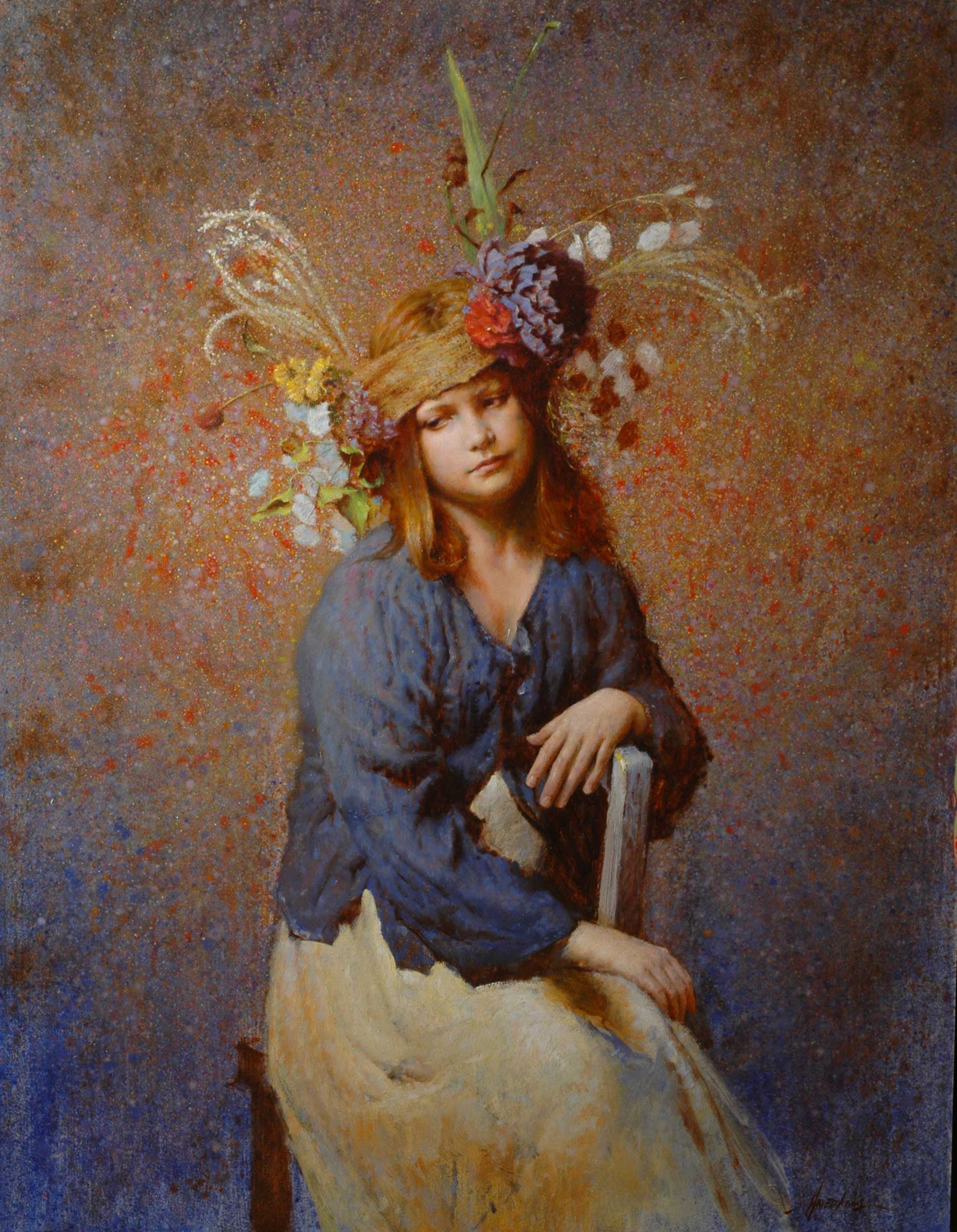
Most of my portraits have the subject in the center of the painting. I often stick to this simple composition partially because I’m not trying to do anything clever or say anything more with my paintings than simply “here is an interesting person to look at.” I hope viewers will think the paintings are painted in a beautiful way, both the subject and the background, and are beautiful to look at. For me, at the moment, that’s enough.
One influence I have is Gustav Klimt. His backgrounds opened a door for me that was previously locked. His use of negative space surrounding his subjects has a tantalizing effect on me. He gave me “permission” to experiment with unreal backgrounds: a great painting can lack foreground, middle ground, and background. Another artist from the same period is Thomas Wilmer Dewing. He will forever hold me enthralled. His subtle tones, encasing figures frozen forever in acts of simplicity, are some of the most beautiful paintings to behold. One other artist I have to mention is Andrew Wyeth. Such strength and heartbreaking grittiness. Much like Dewing—in the sense that his paintings portray a loneliness—it appears to me that with each painting Wyeth reveals a slightly different angle of himself.
Finally, after years of painting, I have come to the point that when I am engrossed in a painting, I don’t look at the work of other people. I discovered that I was the subject in the middle of the painting, and all other art becomes abstract background.
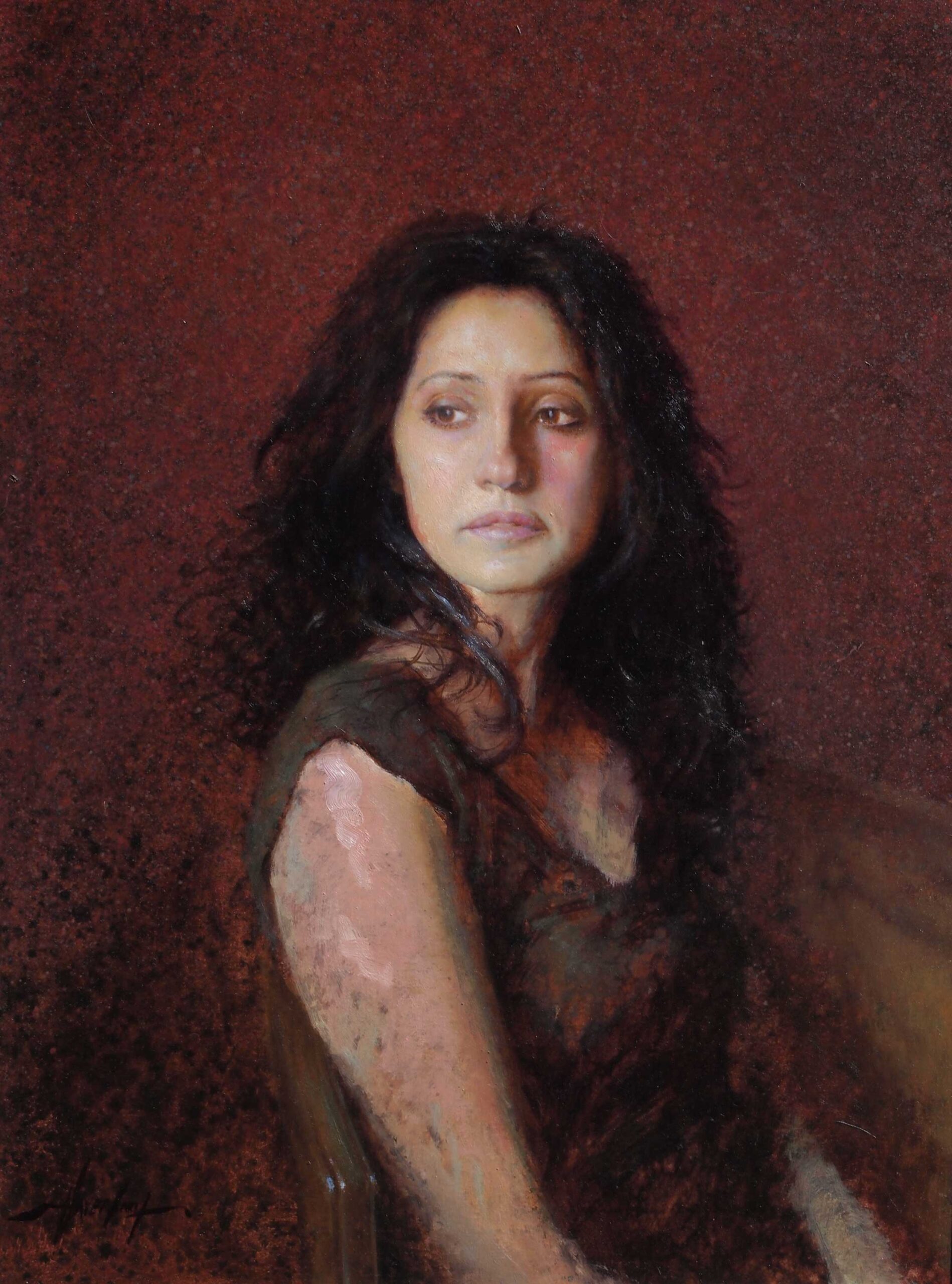
Become a Realism Today Ambassador for the chance to see your work featured in our newsletter, on our social media, and on this site.





The last portrait shows a woman covered with warts or moles on all but her face … it seems very challenging to take on such a unique subject yet he makes no comment on this.
Integration of background and portrait is a great thing to do. Bravo! Love the result!
Comments are closed.